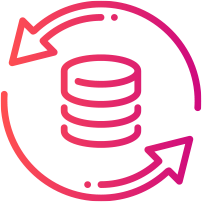Banks have long functioned in rigid, yet successful structures. Therefore, it is only natural that the understanding of innovation is often still lacking. Banks achieve the desired results here through targeted training and recruitment.
Having a silo mentality poses greater challenges, though. Ilario explains that this isolated view arises from topics, departments, and core areas that have developed in isolation from one another. The handling of data here is neither coordinated nor standardised, meaning that each department simply implements its own methods.
Data-driven banking remedies this by coordinating the downstream processes of data preparation and standardisation of the analysis. This allows all authorised employees to use each other’s evaluated data.
Read more about the main problem silos in this Netzwoche article [German]




